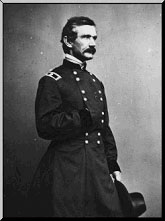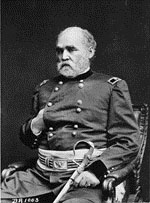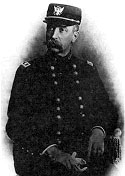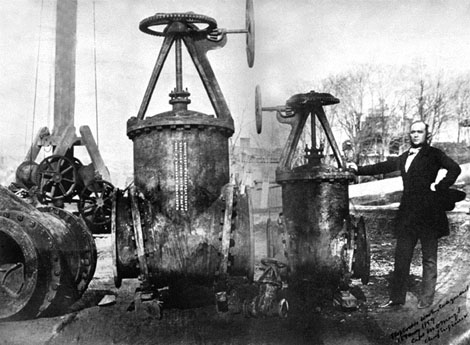The Corps Has Helped Solve Urban Water Problems Since 1824
 |
| Andrew A. Humphreys |
 |
| Montgomery C. Meigs |
 |
| William Ludlow |
 |
| Lytle Brown |
When undertaking the task of providing pure water to drink, the Corps of Engineers began at the top—by providing it to the president of the United States and the first family. In 1824 Army engineers piped water from a spring on K Street to supply the White House, previously dependent on shallow wells. Engineer work then expanded to the rest of the nation’s capital. In the 1840s, future Chief of Engineers, Lt. Andrew A. Humphreys, assisted in work that included installation of the first sanitary sewer in Washington, on 15th Street. The climax of the Corps’ efforts was, of course, Capt. Montgomery C. Meigs' efforts in the next decade to build the Washington Aqueduct—the foundation of the capital’s water system, most of it still functioning today. In a growing urban area plagued by a host of filth-borne diseases, the Corps’ work laid an indispensable foundation for the future eradication of typhoid and cholera.
After the Civil War, work expanded. The raising of the Potomac and Anacostia flats saved thousands of lives, especially among the city’s poor, who lived in malaria-scourged riverside neighborhoods. In the twentieth century, working with top civil consultants, the engineers directed the building of a system to pump the city’s sewage under the Anacostia by means of an inverted siphon and constructed the sewage treatment plant at Blue Plains. Meanwhile, in the late nineteenth century, other American cities called on the Corps for assistance in solving their own water problems. Detailed by the Chief of Engineers, Col. George H. Mendell served during the 1870s as consultant engineer to the water commissioners of San Francisco and the state of California. In the 1880s, Capt. William Ludlow helped give Philadelphia its modern water system despite the opposition of some local politicians.
As the end of the century approached, Army engineers carried their cleanup work to U.S. possessions and administered areas overseas. Now a brigadier general, Ludlow as Governor of Havana (1898-1900) directed a full-scale sanitary reform of this disease-ridden tropical port. Work included plans for sewers, pumping stations, and an improved water system. Lt. Lytle Brown, a future Chief of Engineers, helped to carry out similar improvements in Manila, the Philippine Islands.
The record of the engineering profession as a whole is a distinguished one in the field of public health. Long before the true causes of epidemic disease were understood, engineers moved out ahead of medical researchers to provide practical solutions to pressing public problems. In that record of service, Corps members have shared fully. Today, human health remains an important aspect of the efforts to preserve the total web of life through environmental engineering, and the Corps continues to support the improvement of urban water facilities around the world.

Capt. Montgomery C. Meigs and Aqueduct equipment, 18 August 1859
* * *
October 2002